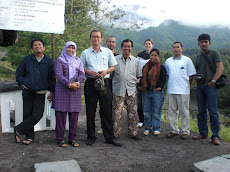In collaboration with the Indonesian Secretary of the Association of South East Asia Nations (ASEAN), HFI recently held a one-day workshop on Disaster Risk Reduction (DRR) and the ASEAN Agreement on Disaster Management and Emergency Response (AADMER). This workshop highlighted the needs, gaps and challenges on institutionalizing DRR in ASEAN.
What came to light from the sessions was that there is a lot of confusion when DRR programmes are put in to practice in ASEAN member states: confusion about coordination, capacity and available information.
Dr. Marqueza L. Reyes, ASEAN-UNISDR Technical Advisor for DRR, stated in her speech that the challenges in institutionalizing DRR include the need for more decentralized policies and frameworks in member states: increasing coordination and capacity across ministries and levels of government; integrating DRR into climate change adaptations measures; risk identification; assessment and monitoring, integrating DRR and recovery, and making DRR actors central to any relief work. “Those are the objective fields we want to get input from this workshop for,” she said.
Adelina Kamal, Head of Disaster Management and Humanitarian Assistance Division of ASEAN Secretariat agreed. In her speech, she suggested that confusion in the DRR field in ASEAN countries stems from discussions about ways to unify coordination among ASEAN state members across the region. She further pointed out that ASEAN tended only to engage on emergency response after disaster had hit. “We want to ensure ASEAN plays a role in entire disaster management actions, both before (by planning Disaster Risk Reduction) and after disaster hits (emergency response, reconstruction and rehabilitation). The NGO and INGOs perspectives are what we need in this case” Adelina said.
The session closed with recommendations from participants from both NGO and INGOs. The recommendations should be considered by ASEAN when forming any policies and follow-up actions regarding DRR issues. The most prevalent recommendations from participants for ASEAN are:
- to determine the objective field for ASEAN in implementing DRR. ASEAN should determine who DRR is for: is it for state members or societies?
- unifying DRR among ASEAN state members.
- Institutionalizing mechanisms and procedures for DRR in ASEAN
- Involving the society in DRR to make it become bottom up rather than top down approach.
